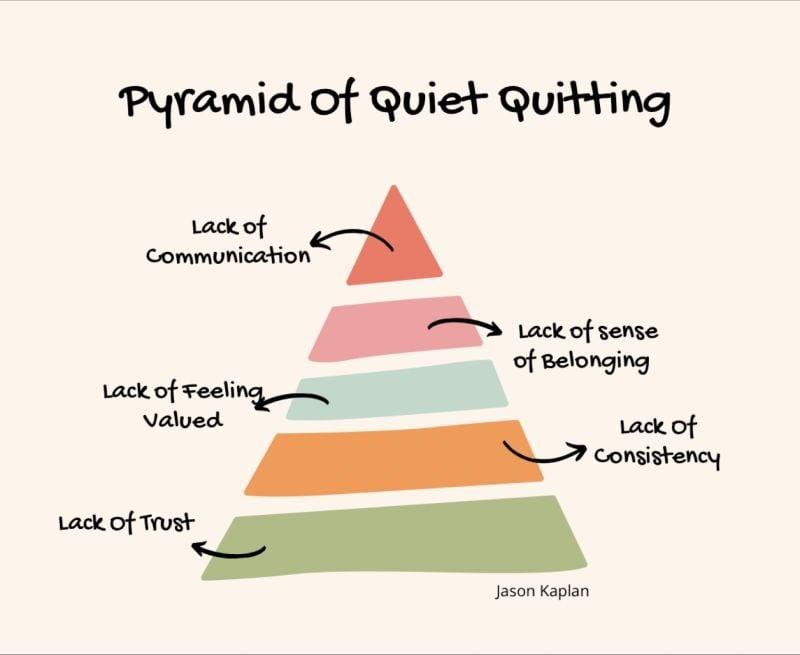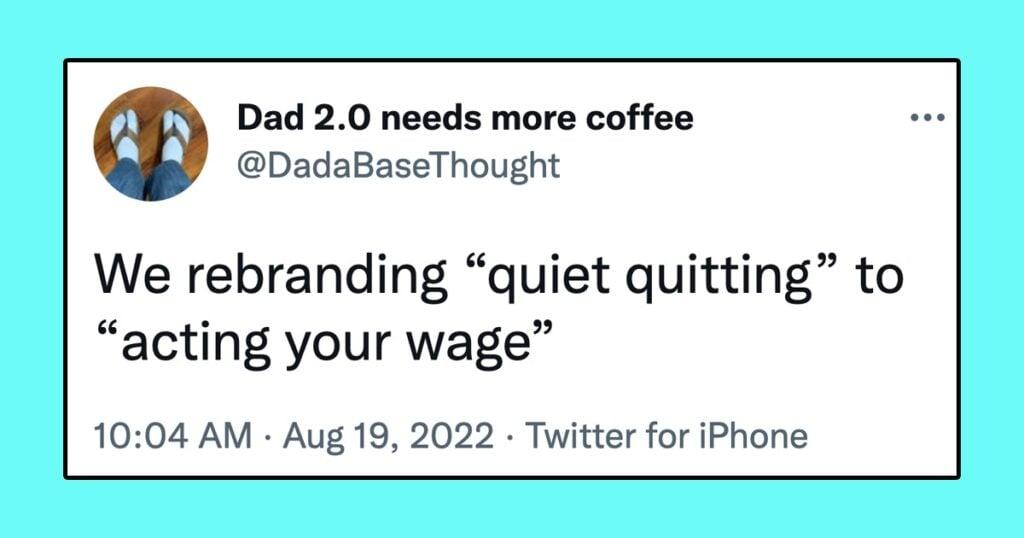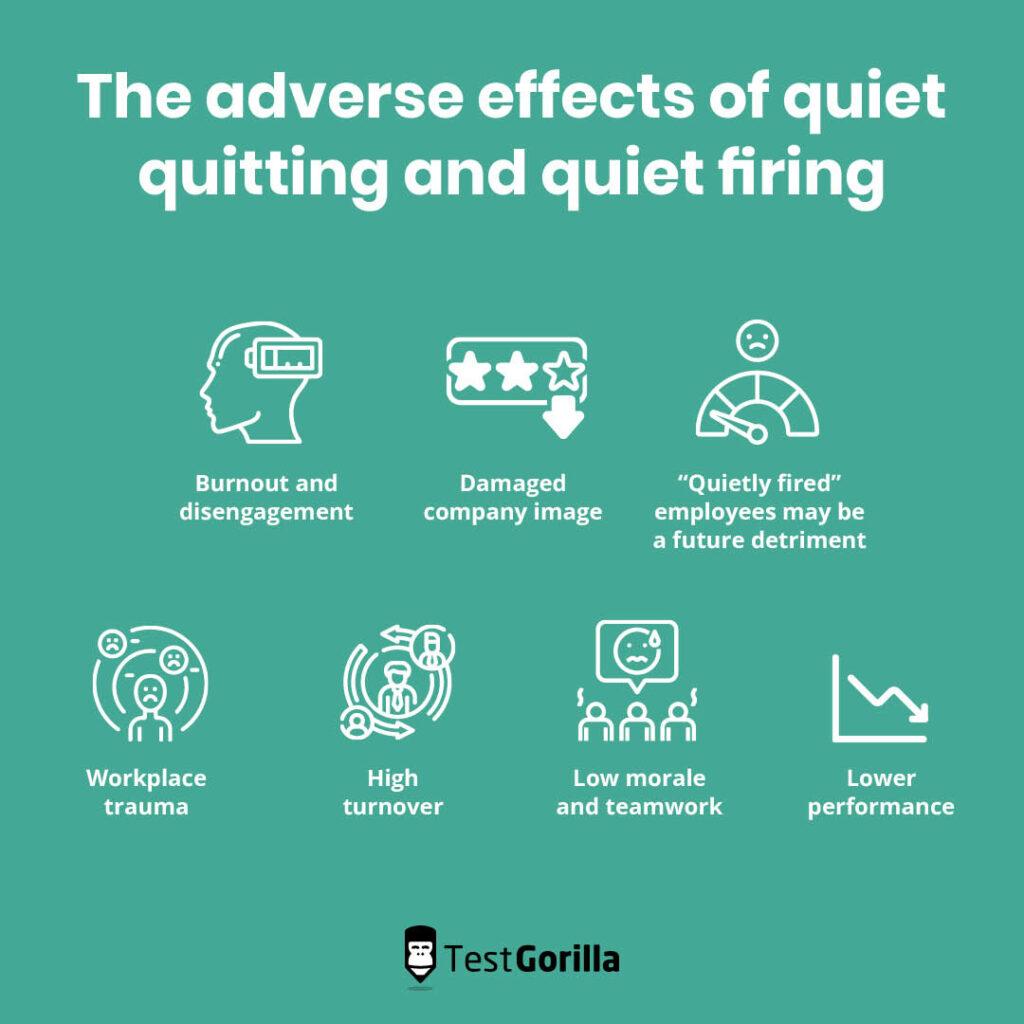In the ever-evolving landscape of workplace culture, buzzwords come and go, but some ideas resurface with a renewed vigor that demands attention. Enter “Quiet Quitting 2.0” – a phrase that’s making waves once again, yet carries a deeper, more nuanced meaning than its predecessor. As employees rethink their relationship with work, boundaries, and engagement, this latest iteration of quiet quitting invites us to explore what it really means to disengage without walking away. But what exactly is Quiet Quitting 2.0, and why is it trending again? Let’s unravel this evolving phenomenon shaping the future of work.
Table of Contents
- Understanding the Evolution of Quiet Quitting and Its New Wave
- Key Drivers Behind the Resurgence of Quiet Quitting 2.0
- The Impact of Quiet Quitting on Workplace Culture and Productivity
- Strategies for Managers to Address and Engage Quiet Quitters
- Practical Steps Employees Can Take to Reignite Passion Without Burning Out
- Final Thoughts
Understanding the Evolution of Quiet Quitting and Its New Wave
Once dismissed as a fleeting trend, quiet quitting has morphed into a more nuanced movement-ushering in what many now call Quiet Quitting 2.0. Unlike its predecessor, which primarily involved employees doing the bare minimum to avoid burnout, this new wave reflects a deeper shift in workplace culture. It’s less about disengagement and more about redefining boundaries, prioritizing mental health, and seeking meaningful work-life harmony.
At its core, Quiet Quitting 2.0 embraces the idea that productivity doesn’t have to come at the expense of personal well-being. Employees are no longer silently withdrawing but are instead vocalizing their limits and expectations with clarity. This evolution signals a collective desire for respect and recognition without the need for overextension or unpaid overtime.
Here’s how the new wave differentiates itself:
- Intentional Disengagement: Rather than passive withdrawal, individuals consciously choose where to invest their energy.
- Open Conversations: Encouraging dialogue around workload, boundaries, and mental health becomes a norm.
- Value-Driven Work: Emphasizing tasks that align with personal and organizational values instead of sheer volume.
| Aspect | Quiet Quitting 1.0 | Quiet Quitting 2.0 |
|---|---|---|
| Employee Mindset | Disengaged, silent | Empowered, vocal |
| Communication | Minimal, avoidant | Open, honest |
| Work Approach | Minimum effort | Focused effort |
| Goal | Burnout avoidance | Work-life balance |

Key Drivers Behind the Resurgence of Quiet Quitting 2.0
At the heart of this renewed wave is a complex blend of evolving workplace dynamics and shifting employee priorities. The traditional 9-to-5 grind is no longer sacrosanct, as more individuals seek balance, autonomy, and meaningful engagement rather than mere paycheck-driven compliance. This resurgence is fueled by a collective reevaluation of what work should provide beyond financial compensation.
One of the most significant catalysts is the rise of hybrid and remote work models. While these arrangements offer flexibility, they also blur the boundaries between professional and personal lives, inadvertently prompting employees to recalibrate their commitment levels. The desire to protect mental health and avoid burnout often translates into a quiet withdrawal from overexertion.
Economic uncertainty also plays a crucial role. With inflation and market fluctuations impacting job security, many professionals adopt a cautious stance – doing what’s required without overextending themselves. This mindset is reinforced by a growing skepticism toward corporate loyalty, as employees realize that their dedication is not always reciprocated.
- Technological overload: Constant connectivity fuels fatigue and disengagement.
- Generational value shifts: Younger workers prioritize purpose and flexibility over traditional career ladders.
- Organizational culture gaps: A disconnect between leadership expectations and employee realities encourages minimal compliance.
| Driver | Impact |
|---|---|
| Remote Work | Blurs work-life boundaries, leading to selective engagement |
| Economic Pressure | Increases caution in effort and commitment |
| Tech Overload | Creates mental fatigue, encouraging detachment |
| Generational Changes | Shifts values toward flexibility and purpose |
The Impact of Quiet Quitting on Workplace Culture and Productivity
In the evolving landscape of modern work, the subtle withdrawal of discretionary effort-often dubbed quiet quitting-has rippled through organizations with surprising consequences. Far from a mere trend, this phenomenon reshapes how teams interact, how motivation is perceived, and ultimately, how productivity unfolds on a daily basis. Employees who quietly disengage tend to fulfill their core responsibilities but stop short of going beyond, signaling a shift in the unspoken social contract between employer and worker.
This recalibration affects workplace culture in profound ways. The invisible boundary employees draw can lead to a more transactional environment, where collaboration and initiative dwindle. Without the spark of voluntary extra-mile contributions, team dynamics may cool, fostering a culture of minimalism and cautious engagement. Managers find themselves navigating a landscape where the usual markers of commitment-like staying late or volunteering for extra projects-no longer reliably indicate dedication.
However, the productivity impact is not always straightforward. While some organizations witness a dip in innovation and responsiveness, others report a paradoxical stabilization or even improvement in output metrics. This is often attributed to employees focusing sharply on their essential duties, reducing burnout and maintaining consistent performance levels. The real challenge lies in balancing this equilibrium without sacrificing the creative and collaborative edge that propels companies forward.
- Reduced overtime: Employees stick strictly to scheduled hours.
- Clearer boundaries: Work-life balance becomes a priority.
- Shift in motivation: Extrinsic rewards gain importance over intrinsic drive.
- Managerial adaptation: Leadership styles evolve to engage differently.
| Aspect | Positive Effect | Negative Effect |
|---|---|---|
| Employee Well-being | Improved work-life balance | Reduced workplace engagement |
| Team Dynamics | Clearer role expectations | Lower collaboration levels |
| Productivity | Consistent task completion | Less innovation and initiative |

Strategies for Managers to Address and Engage Quiet Quitters
Listening actively remains the cornerstone of any effective approach. Managers should create safe spaces where employees feel comfortable voicing concerns without fear of judgment or reprisal. This can be done through regular one-on-one check-ins, anonymous feedback tools, or informal coffee chats. Understanding the root causes behind quiet quitting-whether it’s burnout, lack of recognition, or misalignment with company goals-allows managers to tailor their response rather than applying generic solutions.
Transparency is another powerful tool. When managers openly communicate company objectives, challenges, and how each role contributes to the bigger picture, employees often feel more connected and valued. This clarity can reignite a sense of purpose, transforming quiet quitting into quiet engagement. It’s essential that managers don’t just talk but also listen back, using feedback loops to adjust workloads and expectations in real-time.
- Empower autonomy: Provide employees with control over how and when they complete tasks.
- Recognize effort: Celebrate small wins publicly to reinforce value.
- Offer growth paths: Align tasks with career development opportunities.
- Promote well-being: Encourage boundaries to prevent burnout.
| Manager Action | Expected Outcome |
|---|---|
| Active Listening Sessions | Uncover hidden frustrations |
| Transparent Goal Sharing | Boosts sense of purpose |
| Flexible Work Policies | Enhances autonomy & satisfaction |
| Recognition Programs | Increases motivation |

Practical Steps Employees Can Take to Reignite Passion Without Burning Out
Reigniting your passion at work doesn’t mean pushing yourself to the brink of exhaustion. Instead, it’s about strategically nurturing your energy and motivation in ways that feel sustainable and authentic. Start by setting clear boundaries around your work hours to protect your personal time. This might mean turning off email notifications after hours or dedicating certain days to focus without interruptions. By respecting your own limits, you build a foundation that prevents burnout and keeps your enthusiasm alive.
Another effective approach is to diversify your daily tasks. When monotony creeps in, boredom often follows, leading to disengagement. Mix routine jobs with creative or challenging projects that stimulate your mind and allow you to showcase your strengths. If your role doesn’t naturally offer variety, consider proposing small initiatives or learning opportunities that align with your interests. This not only rekindles passion but also signals your proactive attitude to managers.
Finally, don’t underestimate the power of connection. Engaging with coworkers through informal chats or team activities can rebuild a sense of community and shared purpose. Sometimes, reigniting passion is as simple as exchanging ideas, celebrating small wins, or even mentoring a colleague. These interactions remind us that work isn’t just about tasks – it’s about people, growth, and impact.
- Prioritize tasks that energize you and delegate or delay less critical ones.
- Schedule regular breaks to recharge your mind throughout the day.
- Set personal goals that align with your values and career aspirations.
- Practice mindfulness or journaling to stay connected with your emotional well-being.
| Step | Action | Benefit |
|---|---|---|
| 1 | Set clear boundaries | Protects personal time |
| 2 | Mix up tasks | Boosts engagement |
| 3 | Connect with peers | Enhances motivation |
Final Thoughts
As the conversation around Quiet Quitting 2.0 gains fresh momentum, it’s clear that this evolving workplace phenomenon speaks to deeper questions about balance, boundaries, and the meaning of work itself. Whether viewed as a quiet rebellion or a call for healthier engagement, Quiet Quitting 2.0 invites us all to reflect on how we show up-both for our jobs and for ourselves. In an era where the lines between work and life blur more than ever, perhaps the real trend is not just about quitting quietly, but about listening more closely to what our own well-being truly demands.

